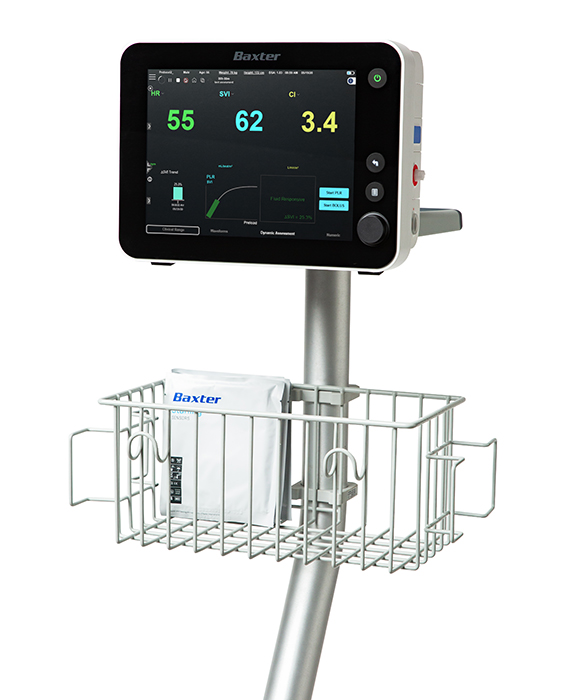Fluid Management & Sepsis
FLUID MANAGEMENT & SEPSIS
CMS Reimbursements Tied to SEP-1 Performance: What You Need to Know:
SEP-1, a CMS Quality Measure, requires a protocol for treating severe sepsis or septic shock patients. SEP-1 will soon be included in CMS's Value-Based Purchasing Program, transitioning from pay-for-reporting to pay-for-performance1,2. This means that CMS reimbursements will be tied to SEP-1 performance1,2.
Learn more about the 100% non-invasive Starling Fluid Management Monitoring System that may:
Improve Sepsis Clinical Outcomes3,4
Utilizing dynamic assessments to guide fluid resuscitation in sepsis and septic shock was associated with improved patient outcomes
Avoid the Cost of Fluid Mismanagement in Sepsis5
Implementing a stroke volume guided fluid management strategy was shown in a study to be associated with an estimated $14K cost avoidance per treated patient
Support SEP-1 Compliance Scores 6
There is a statistically significant correlation between Starling sensor usage and SEP-1 compliance

FLUID ADMINISTRATION IS A CORNERSTONE OF SEPSIS MANAGEMENT AND IS ALSO A KEY PART OF THE SEP-1 BUNDLE3,6
Fluid administration is a cornerstone of sepsis management and is also a key part of the SEP-1 bundle3,6. Fluid administration can be a clinical challenge because every single patient has an individualized volume need. With fluids acting as the first line of treatment for sepsis, fluid management plays a critical role in the management of septic patients3.

STARLING’S DYNAMIC ASSESSMENTS OF FLUID RESPONSIVENESS CAN HELP
A dynamic assessment of fluid responsiveness makes it easy for clinicians to determine if their patient is fluid responsive or not fluid responsive. The noninvasive Starling Fluid Management Monitoring System provides an easy-to-use dynamic assessment of fluid responsiveness - taking the guesswork out of fluid administration. The Starling Fluid Management Monitoring System provides a full hemodynamic profile within seconds — with 94% sensitivity and 100% specificity for predicting fluid responsiveness in critical care situations7.
Learn how the Starling Fluid Management Monitoring System can help make SEP-1 compliance easier for your care team!

THE STARLING SYSTEM CAN HELP SUPPORT SEP-1 COMPLIANCE.
The Starling system provides a noninvasive measurement of CO, CI, SV or SVI with a dynamic assessment of fluid responsiveness — a fluid challenge or passive leg raise — to determine if a patient is fluid responsive or is not fluid responsive.
Starling assessments support appropriate fluid and vasopressor resuscitation.
Rx only. For safe and proper use of the products mentioned herein, please refer to the appropriate Operator's Manual or Instructions for Use.
Indications for Use:
The Starling with Non-Invasive Blood Pressure (NIBP) and SpO2 functionalities is a portable, hemodynamic monitoring noninvasive Cardiac Output monitoring device that monitors and displays a patient's Cardiac Output (CO) in Ltr/Min with a NIBP function that non-invasively measures and displays blood pressure (diastolic, systolic, and mean arterial pressure) and heart rate and with a SpO2 function that non-invasively measures and displays blood oxygen saturation (SpO2). The device displays associated hemodynamic parameters based on measurements or calculations of measurements already incorporated into the Starling. The Starling with NIBP and SpO2 functionalities is intended for use within hospitals and other healthcare facilities (e.g., outpatient clinics) that provide patient care.
Baxter, Starling and Bioreactance are trademarks of Baxter International Inc. or its subsidiaries.